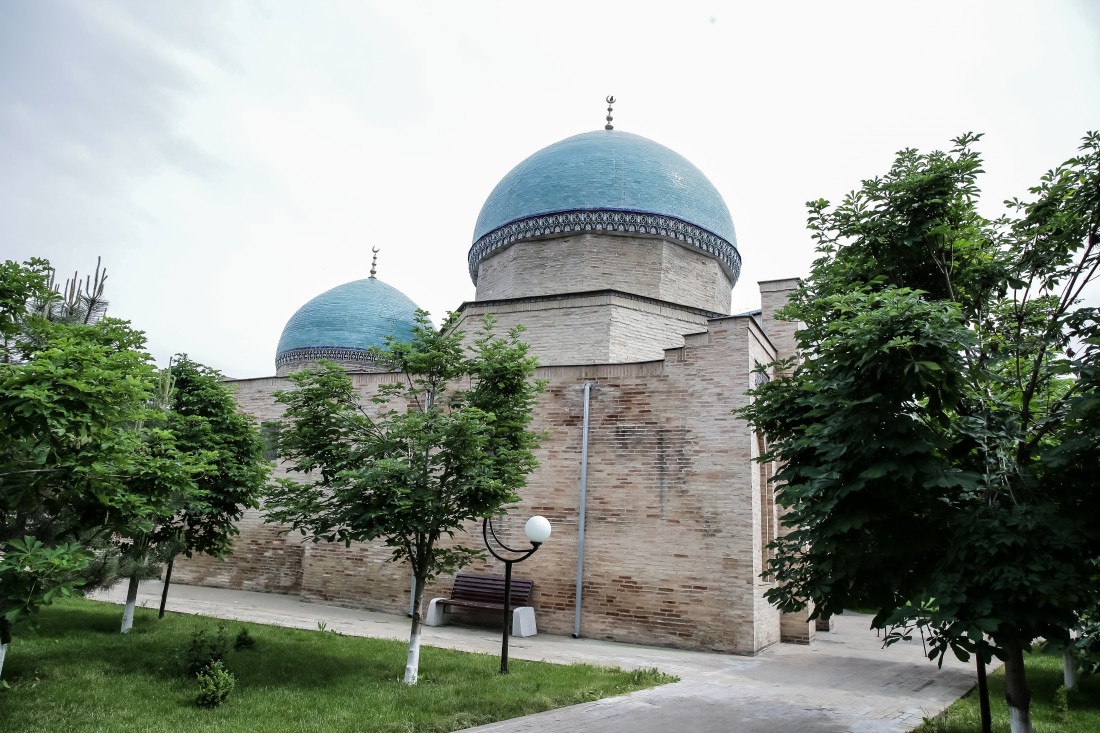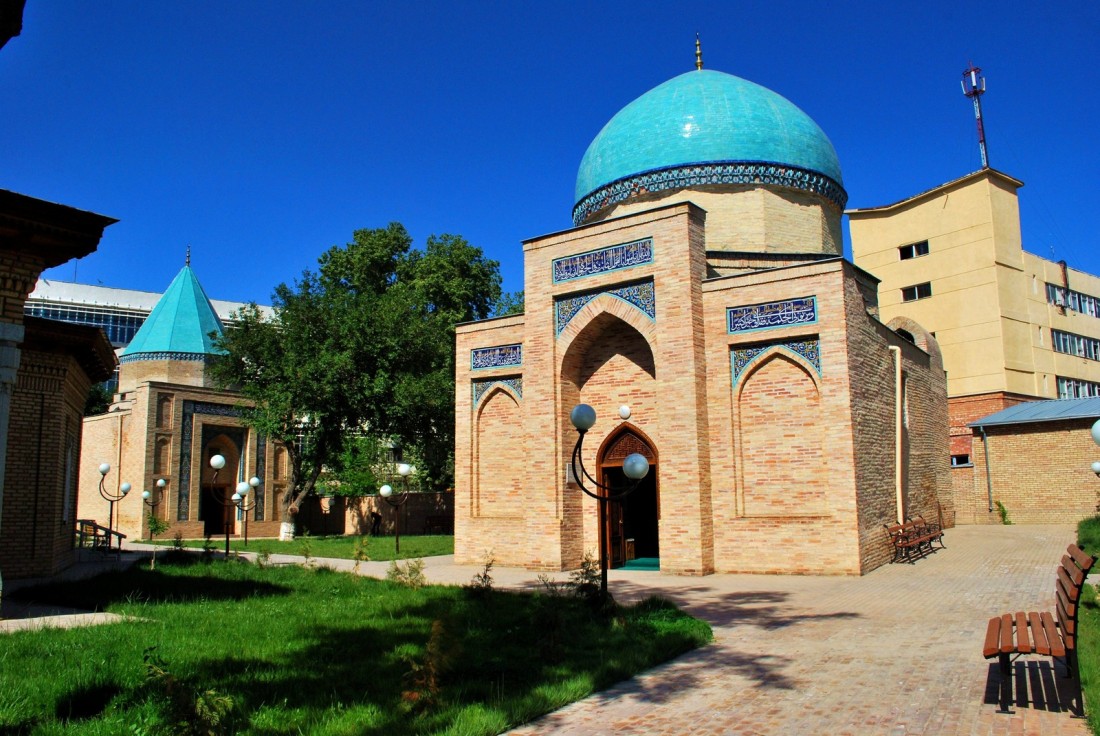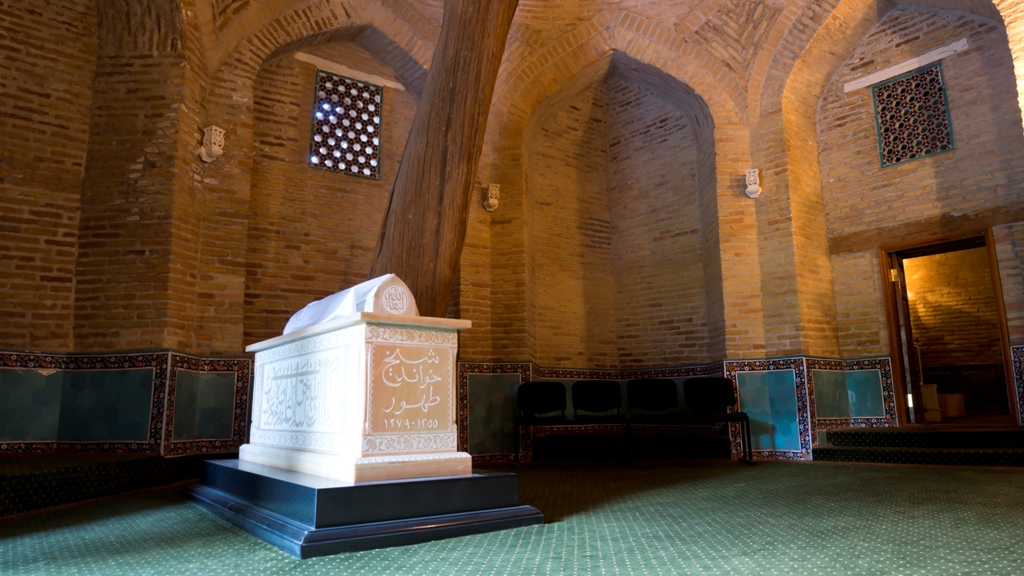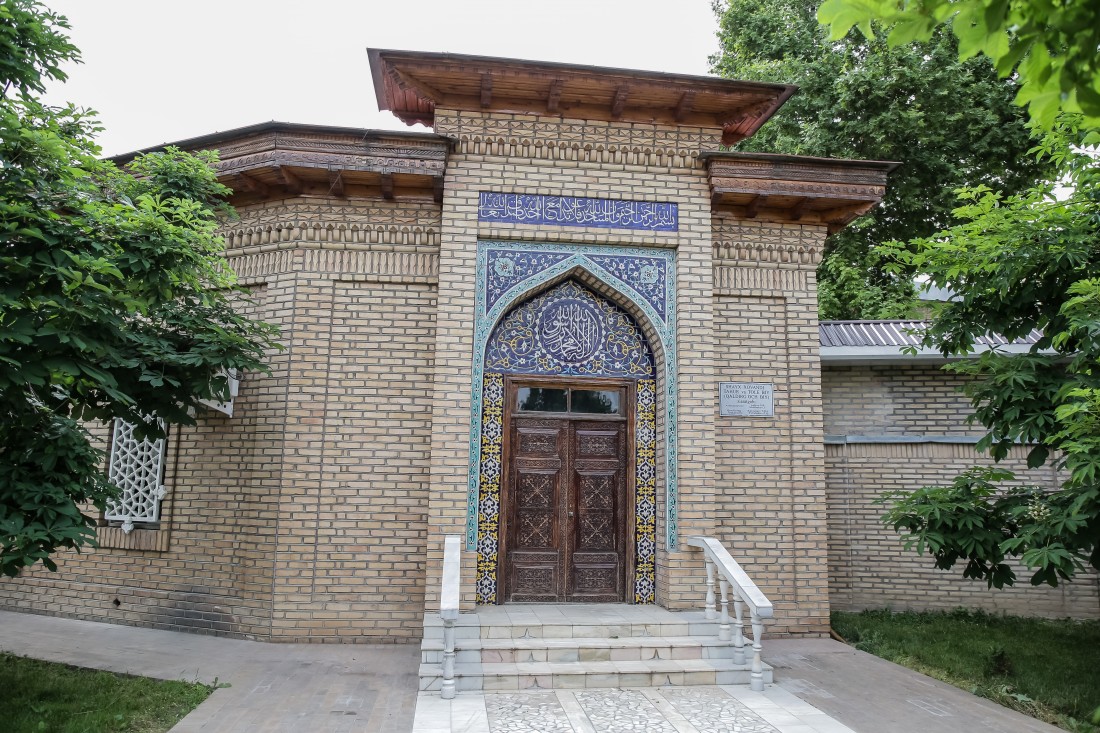The territory of the Sheikhantaur ensemble is located in Tashkent between Abdullah Kadiri and Alisher Navoi Streets. The ensemble consists of three mausoleums: the mausoleum of Sheikh Hovendi at-Tahur, the mausoleum of Kaldyrgach-biy and the mausoleum of Yunus Khan. 
Sheikhantaur was born at the end of the XIII century in a Hodge family in the mountain village of Bogustan – now the waves of the Charvak reservoir are splashing there. His father, Sheikh Omar, was a descendant of the second righteous Caliph Omar. The people believed that Sheikh Omar was able to work miracles and command the elements. The highest grace seems to have passed from him to his son. The young Sheikhantaur comprehended Sufi truths. According to biographers, the Tashkent Sufi was particularly struck by the truth at that time: "High spiritual qualities and knowledge in the sciences are directly proportional to the patience and meekness of the sage in relation to the rudeness of the ignorant.
"The sheikh lived and preached in Tashkent and died between 1355 and 1360. The mausoleum over his grave is said to have been built on the initiative of Amir Timur himself. This is a two-chamber low structure under two domes of different heights. The building acquired a modern look after numerous restorations and alterations at the beginning of the XIX century. Inside there are three tombstones, one under a large dome and two under a small one. The mausoleum has preserved the only one of the forty-eight saurs - "Iskander Saur", planted by Alexander the Great. The petrified coniferous tree is located inside the mausoleum right next to the majestic tombstone of the Sheikh.

It is worth noting that many prominent residents of Tashkent belonged to the Sheikhantaur family, including the famous preacher of the Timurid era Ubaydullah Khoja Ahror (1404-1490) and the independent ruler of Tashkent in the second half of the XVIII century Yunus-hajja.
Next to the mausoleum of Sheikhantaur, another mausoleum has been preserved to this day – mazar Kaldyrgach-biy. The characteristic shape of the pyramidal dome of this architectural monument of the XV century differs sharply from other buildings of the complex and resembles the mazars of the Kazakh steppes. Indeed, under the arches of this mausoleum rests the ashes of the famous statesman Tolebii, a Kazakh by birth. Together with the residents of Tashkent, Tolebiy managed to expel the Dzhangar-Kalmyk invader from the land of Central Asia. Tolebiy appointed Yunus-khoja - Sheikhantaur khokim as his confidant in Tashkent, who after his death became the independent ruler of the Tashkent state.

Another preserved mausoleum of the complex at the end of the XV century is the mausoleum of Yunus Khan, a Mogolistan poet and warrior, the grandfather of the great Babur. The building has been restored many times, this is a rare type of T-shaped khanaka with a high revak on the top of the facade. 
Tashkent Sheikhantaur today continues to retain the significance of an outstanding architectural and pilgrimage monument. The beauty and picturesqueness of this corner of the city inspired poets and artists. Sergey Yesenin, Alexander Volkov, Sergey Yudin and many others loved to visit here.
Comment